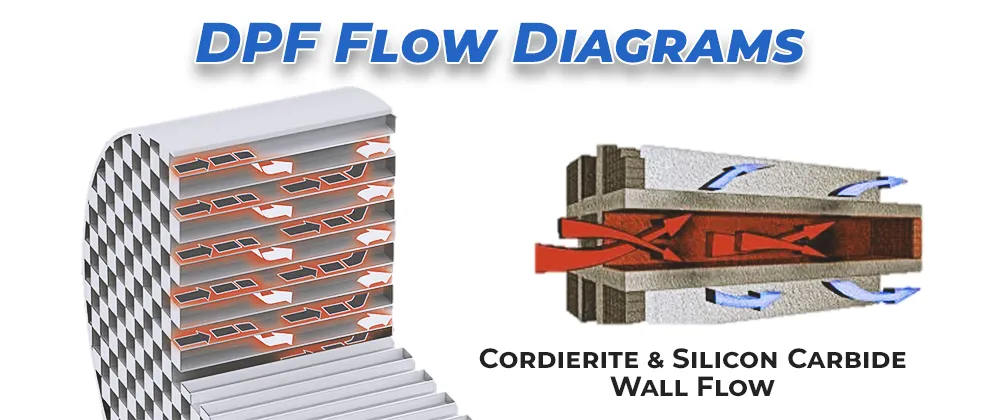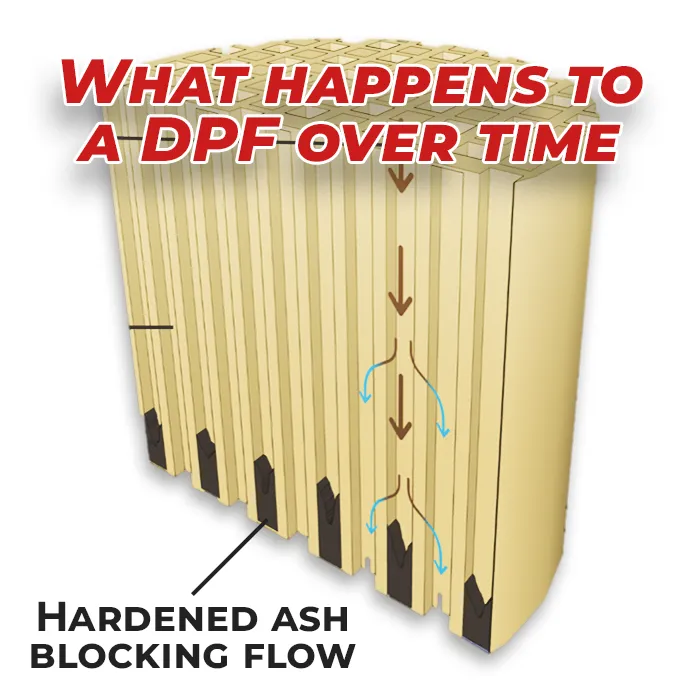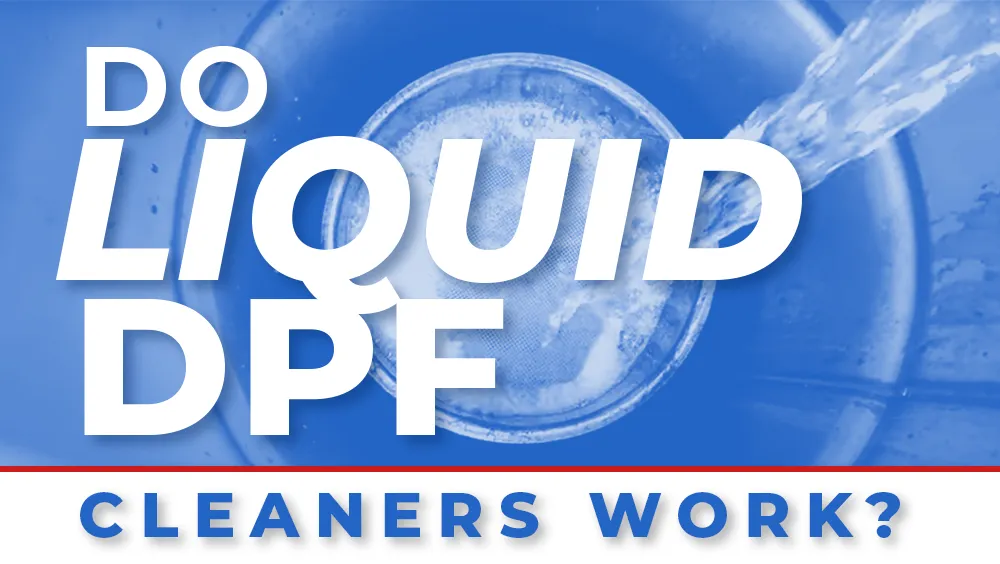Understanding Diesel Particulate Filters (DPFs)
Before delving into the efficacy of DPF cleaning, it is essential to understand how DPFs function. DPFs are designed to trap and remove particulate matter, such as soot and ash, from the exhaust gases produced by diesel engines. They consist of a ceramic or metal honeycomb substrate with tiny channels (often called “cells”) that capture these harmful particles.

Over time, as the DPF collects more particulate matter, it becomes less efficient, leading to issues like reduced engine power, increased fuel consumption, and heightened emissions. To address these problems, various cleaning methods and products have been developed.


DPF Cleaning Methods
Diesel Fuel Additives: Diesel additives are mixed with the fuel and designed to reduce the formation of soot and ash in the DPF. They can also help lower the regeneration temperature required to burn off accumulated particulate matter.
Liquid DPF Cleaning Solutions: These solutions are typically sprayed into the DPF through an access port, or the DPF is removed and rinsed with the solution and then water. They aim to dissolve and loosen soot and ash deposits, making it easier for the filter to regenerate.
Power-Washing: While popular online, this method is not recommended as it is very easy to damage your filters. Too much water pressure can dissolve the glue holding the DPF filter sections together, causing the brick to break apart. The fiberglass insulation between the brick and the metal casing of the filter can also sustain damage. DOCs are particularly vulnerable to high-pressure water which can remove the precious metals that the DOCs are coated with. The cost to replace a filter is often many times higher than just having the filter professionally cleaned – thousands vs hundreds of dollars. Not worth the risk.
Aqueous DPF Cleaners: These systems use water to wash the soot and ash from a DPF, then dry the unit to be re-installed onto a vehicle. These systems are typically faster than other methods and more accommodating to oddly shaped units. The Filtertherm Aqueous DPF Cleaning machine is an automated, self-contained unit that utilizes a surfactant pre-soak stage. This loosens the particulates inside the filter’s cell walls. Learn more about the Aqueous cleaning process here.
Thermal DPF Cleaning: The traditional “bake & blow” method has been around the longest. It uses high heat to burn/loosen any soot remaining in the filter to ash, once the baking process is finished, another machine is used to blow the ash out of the filter. Consider the highly-evolved, purpose-built Filtertherm Thermal system for your fleet. You get a high-capacity, purpose-built oven, paired with an automated, self-contained blow-out machine (Pulse Cleaner), Cooling Cart, and Inspection Table. Designed specifically for each stage of the thermal DPF cleaning process.
Effectiveness of DPF Cleaning
Regardless of the method used, the effectiveness of cleaning DPFs can vary depending on several factors:
Maintenance and Usage: Regular maintenance and adhering to manufacturer guidelines for DPF cleaning and regeneration are crucial. Routinely cleaning DPFs as a part of proactive maintenance often yields better results and longevity.
Type of DPF Cleaning: The type of cleaning method used matters. Some methods may be more effective than others depending on factors such as filter size/shape, how clogged the DPF is, etc. It is essential to choose one that is suitable with your DPF and situation.
Getting to the Root Cause: Diagnosing & understanding how upstream issues can affect the aftertreatment system is vital. Frequent regens/DPF cleanings, dash warning lights, high fuel consumption, filters with oil or coolant soaking, etc. can indicate deeper problems. Left unaddressed your filters’ performance can degrade and even lead to the dreaded “de-rate”. At that point, if the DPF is severely clogged, professional cleaning or an expensive replacement filter may be necessary.
Preventative vs. Corrective Use: Aftertreatment filter cleaning is often more effective when used preventatively before significant clogging occurs. Using DPF cleaning as a corrective measure for severely clogged filters often yields limited results.

As Clear as Mud
The question remains: How well do these various liquid/additive DPF cleaning methods work for DPFs?
Unfortunately, definitive answers are hard to find. Proponents of the liquid cleaning methods often include those looking for a cheap DIY fix, or those who may not completely understand how these filters work.
- One of the issues with the liquid methods is if the filter is left on the vehicle, then it is being cleaned in the “wrong direction”. Cleaning just about any type of filter works better when cleaned opposite the normal flow direction.
- The other problem is that just because the outside surface of the DPF filter’s substrate looks clean, it doesn’t mean it’s clean deep down in the cells/channels. We’ve seen filters that look spotless on the surface, but an inch or 2 down there’s hardened ash blocking air flow. This is why we recommend performing flow tests and especially pin tests to check for sintering (hardened ash) before and after cleaning the filter.
- There’s also the question of scalability and proper disposal of the wastewater.
It’s good to remember that the “quick and easy way” isn’t always the best. What may be fine for Joe DIY in his home garage isn’t going to work as well for the hundreds of expensive trucks in your fleet.
Our service shops have been cleaning DPFs from the beginning. In our experience, using either of the proven DPF Cleaning techniques is the best bet in the long run. We recommend with confidence the same type of DPF Cleaning systems we use every day – Thermal or Aqueous – whether you send out your fleet’s DPFs to be cleaned or clean them yourself in-house.

Find the right DPF Cleaning solution for your FLEET.
Give us a call. Get Answers.
Use our ROI tool to see how quickly this investment can save your fleet time and money.
Schedule a meeting with Wayne Cochrane, our National Sales Manager.



